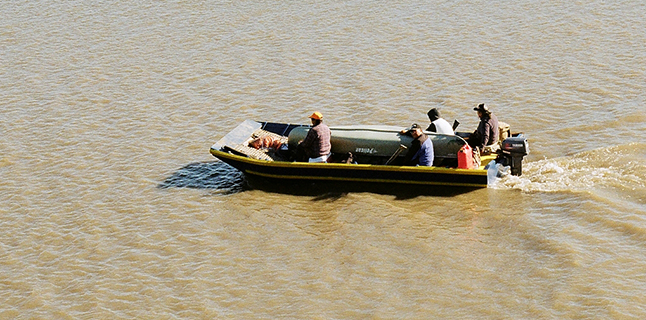| |
The Effects of Human Activities in the Watershed on Water Quality

Human activities in the watershed are correlated with the water quality of aquatic ecosystems. These relationships tend to be more apparent in lakes and smaller tributaries rather than major rivers.
-
As agricultural intensity increases (in the form of chemical and fertilizer expenses and manure production), nutrients in small streams increase while compliance with surface water quality guidelines decreases.29
- As the density of disturbance in the watershed increases, nutrient concentrations increase.30
- Land-clearing effects depend on many factors, such as the density of the disturbance, slope, the presence of wetlands in the watershed, and differences in forest management practices. In general, two decades of research in the foothills and boreal regions of Alberta suggest that nutrients in surface water are affected if over half of a watershed is cleared.31
Below this value, only relatively minor effects are expected.
Nutrients
The amount of phosphorus and other nutrients in rivers and streams is a product of several variables, including the source water, the local natural environment, and point- and non-point-source pollution. Nutrients typically fluctuate more than other ARWQI sub-indices. At all monitoring sites downstream of Grande Prairie, the 10-year averages for nutrients have worse scores than the sampling station upstream of the city. Monitoring nutrient levels makes it possible to recognize problems in water quality as they occur and adjust management practices according to the results.
Non-point-source pollution
Point-source pollution comes from specific places, such as a processing or wastewater-treatment plant. The effects of point-source pollution can be measured by taking samples both upstream and downstream of the source. Non-point-source pollution is much more difficult to measure because it doesn't come from a single, identifiable source, but from many diffuse sources. The pollutants are distributed through seepage and by rain and snowmelt moving over and through the ground into lakes, rivers, and wetlands. Common examples include:
- Excess fertilizers, and pesticides from agricultural lands and residential areas;
- Oil, grease, and toxic chemicals from urban runoff and energy production;
Sediment from improperly managed construction sites, crop and forest lands, and eroding stream banks;
- Salt from irrigation practices and acid drainage from abandoned mines;
- Bacteria and nutrients from livestock, pet wastes, and faulty septic systems.
Source
Lorenz, K., S. Depoe, and C. Phelan. 2008. Assessment of environmental sustainability in Alberta's agricultural watersheds project: Volume 3: AESA water quality monitoring project. 543 pp. Alberta Agriculture and Rural Development.
Source
CPPENV. 2013. Drivers of lake water quality in the Beaver River watershed of Alberta. Report
prepared for the Beaver River Watershed Alliance, Bonnyville, AB
Source
Prepas, E.E., J.M. Burke, G. Putz and D.W. Smith. 2008. Dissolved and particulate phosphorus concentration and export patterns in headwater streams draining Boreal Plain watersheds one year after experimental forest harvest and post-harvest silvicultural activities. Journal of Environmental Engineering and Science 7: S63-S77.
|
|
Bacteria
Measurements of fecal coliforms and Escherichia coli provide an indication of bacterial contamination that may pose a risk to humans, animals, and ecosystems. For the major rivers, fecal coliforms and E. coli counts measured were generally low. However, there was a sharp increase in bacteria (that is, a drop in the bacterial score) in 2008/09 on the Wapiti River at the confluence of the Smoky, which is downstream of Grande Prairie.
This may have been caused by a combination of factors. It is likely that effluent from the Aquatera plant played a role, as it is known to significantly increase fecal coliforms in the Wapiti River. 32 Such irregularities provide clues as to the stresses on the river and allow managers to take corrective action. For instance, some jurisdictions in Alberta have implemented disinfection in their treatment process to address this issue.

PHOTO: DAVID FAIRLESS |
|

